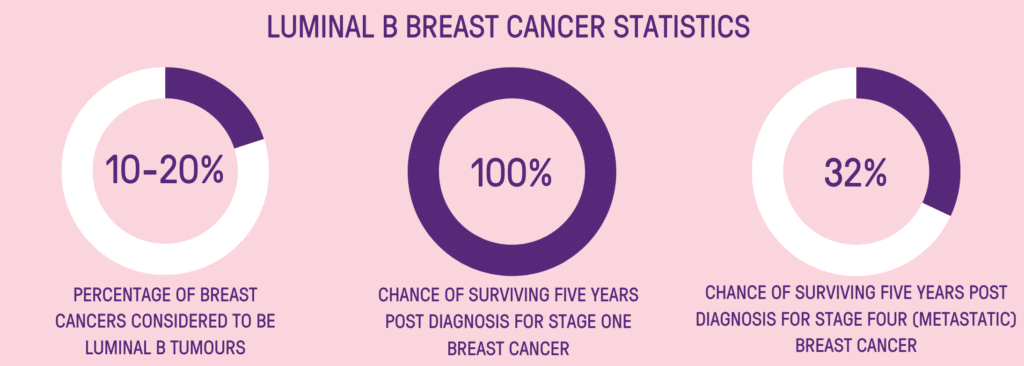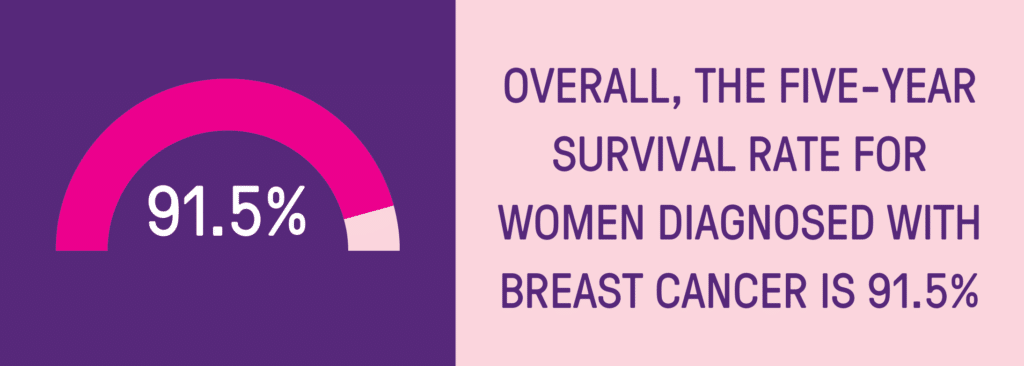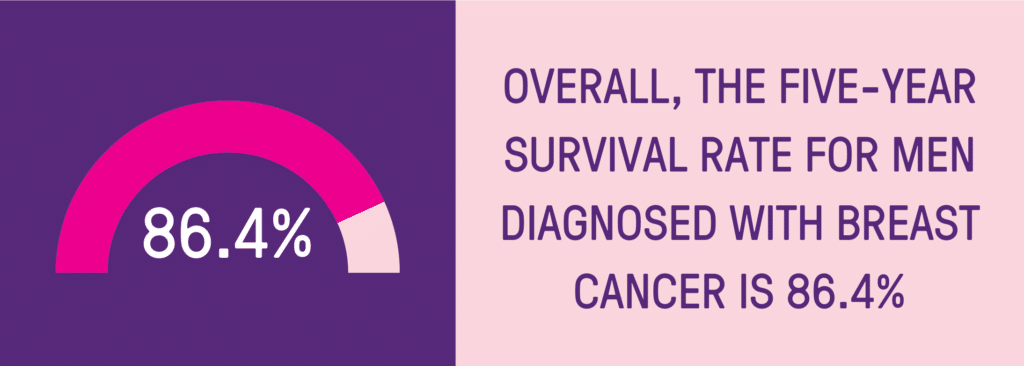How Common is Luminal B Breast Cancer?
Around 10-20 percent of breast cancers are Luminal B tumours. Women with luminal B tumours tend to be diagnosed younger than those with Luminal A tumours.
Luminal B breast cancers are more commonly described by their hormonal status, for example, ER positive/HER2 negative and/or PR positive/HER2 negative. The luminal B molecular subtype classification is based on a special laboratory test of the tumour and is more often used in research circumstances than in discussions with patients.

What are the Symptoms of Luminal B Breast Cancer?
Some patients diagnosed with Luminal B may not present with any symptoms and are diagnosed on screening mammogram.
When symptoms are present, they may include:
- A new lump in the breast, armpit area or around the collarbone
- Thickening or hardening in the breast
- A change in breast size or shape
- Changes to the nipple, such as sores or crusting, an ulcer or inverted nipple
- Clear or bloody nipple discharge
- Changes to the skin including redness, puckering, or dimpling (an ‘orange peel’ appearance)
- Breast tenderness or pain
If the cancer has progressed to the metastatic stage, further symptoms may be present dependent on where the cancer has spread. Learn more about metastatic breast cancer here.
Sign up to receive our latest Research Newsletter
How is Luminal B Breast Cancer Diagnosed?
Luminal B breast cancer will be diagnosed in the same way as most other breast cancers. This includes a mammogram or other imaging tests. A biopsy will most likely be ordered to determine which subtype of breast cancer is present. This will help the treatment team plan treatment for the cancer.
If the breast cancer has spread and metastasised, further tests may be required to determine the size and location of the metastatic breast cancer.
How is Luminal B Breast Cancer Treated?
As Luminal B cancers are hormone receptor positive, patients with early-stage breast cancer who undergo breast surgery may receive hormonal treatments to block hormones from fuelling cancer growth.
These can include drugs such as tamoxifen, anastrozole or letrozole which are to be taken daily for at least five years in the case of early-stage breast cancer, after all other breast cancer treatments are completed.
Other treatments can include surgery, chemotherapy and/or radiotherapy. In the case of metastatic breast cancer, hormonal treatments are also used and continue for as long as they are providing a benefit to the patient.
If the cancer is HER2 positive, treatment will also likely include a HER2 targeted drug such as trastuzumab (Herceptin). The most commonly used HER2 targeted therapy is trastuzumab, sometimes in combination with pertuzumab.
This was proven to help reduce the risk of breast cancer recurrence in the early-stage breast cancer by 46%, in the Breast Cancer Trials HERA clinical trial. If the cancer is metastatic, other targeted therapies including pertuzumab (Perjeta), T-DM1 (Kadcyla) or lapatinib (Tykerb) may be used.
Learn more about Dawn’s breast cancer experience as a HERA trial participant, and how the participation of thousands of women in this research has saved lives.
What are my chances of survival (prognosis) if I am diagnosed with Luminal B Breast Cancer?
Patients with Luminal B breast cancer tend to have good survival rates, however not as high as Luminal A breast cancers. This is because Luminal B breast cancer is more aggressive and may grow and spread faster than a Luminal A breast cancer.
However, your age, stage of disease and tumour type has the greatest impact on your chance of survival. Those diagnosed with stage one breast cancer have an almost 100% chance of surviving five years post diagnosis, however those diagnosed with stage four (metastatic) breast cancer only have a 32% chance of surviving five years post diagnosis.


Overall, the five-year survival rate for women diagnosed with breast cancer is 91.5%, and 86.4% for men. Click here to find out more about male breast cancer.
Support Us
Help us to change lives through breast cancer clinical trials research



